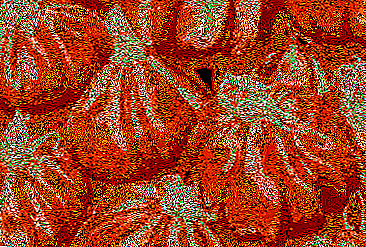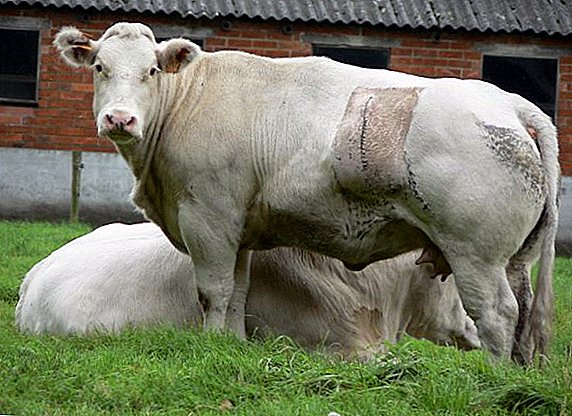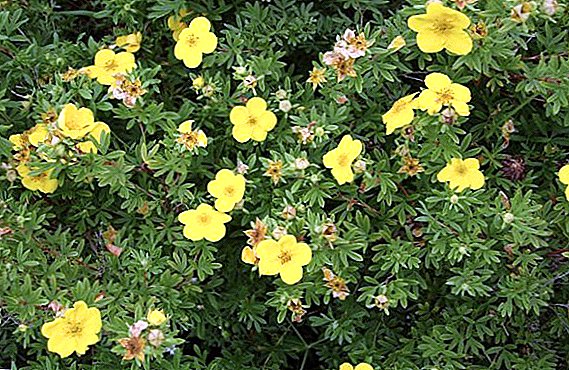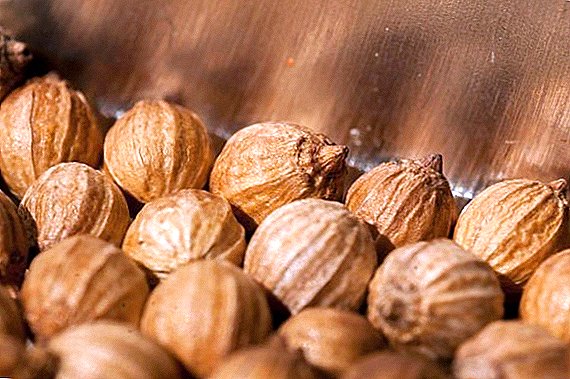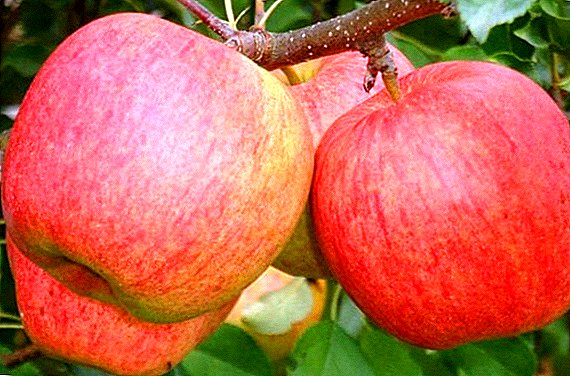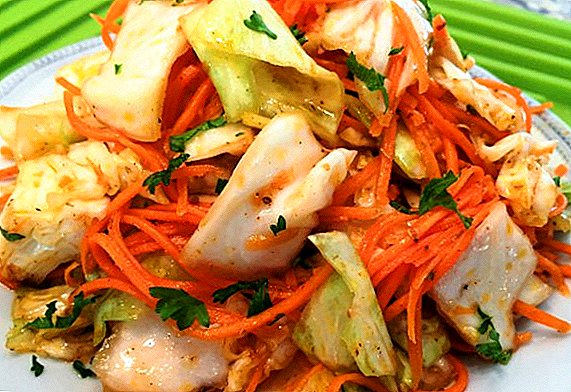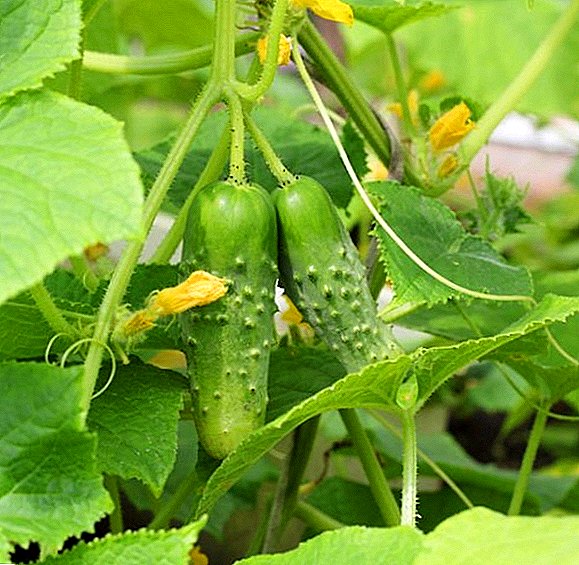 Today, mini cucumbers do not cause much surprise, they have long been popular among summer residents due to their aesthetic appearance, density and elasticity.
Today, mini cucumbers do not cause much surprise, they have long been popular among summer residents due to their aesthetic appearance, density and elasticity.
Gherkin cucumbers and their characteristics
Small cucumber gherkins, as they are called in France, whence their popularity began, do not exceed a length of 9 cm. A variety of pickles pickles even smaller - only 5 cm. Both species, except the mini-size, do not have voids inside the fruit, dense, for which they are valued when pickling.
 Gherkins differ from ordinary cucumbers in a large number of useful substances and in the fact that even when overriding does not exceed a length of 10 cm. Gherkins have a smooth surface, the shape of a cylinder; when pickled, these cucumbers are elastic and crispy, which is not always the case with ordinary cucumbers.
Gherkins differ from ordinary cucumbers in a large number of useful substances and in the fact that even when overriding does not exceed a length of 10 cm. Gherkins have a smooth surface, the shape of a cylinder; when pickled, these cucumbers are elastic and crispy, which is not always the case with ordinary cucumbers.
Today, thanks to the tireless work of breeders, varieties of gherkins have been created that have many attractive characteristics: rapid maturation, immunity to a number of diseases (powdery mildew, downy mildew, etc.) preserved during transportation, high yield, beautiful appearance and excellent taste.
Did you know? When used regularly, gherkins reduce cholesterol levels, normalize the body's metabolism, help clean the intestines and strengthen the immune system.

Features of growing
Cornish cucumber seeds in open ground are sown no earlier than June, because small cucumbers are afraid of low temperatures. It is preferable to grow gherkins through seedlings, pre-hardened before planting in open ground. Mini cucumbers grow well in loose, nutritious soils with an acidity index of 6-7 pH.
The importance of watering cucumbers
 When growing gherkins during the growing season, watering is required moderate, during flowering, watering is reduced.
When growing gherkins during the growing season, watering is required moderate, during flowering, watering is reduced.
During the period of active fruiting, watering is necessary daily, and in the heat it is necessary to irrigate several times a day.
Important! It is advisable to carry out watering with separated water at room temperature in the second half of the day, spraying either in the morning or in the evening so that the moisture that gets on the leaves, evaporating in the sun, does not leave a burn.
Required feed for gherkins
Cucumbers of mini-size need moderate dressings, poorly tolerate excess fertilizer, especially nitrogen. Two weeks after planting, the first feeding is carried out with a balanced complex composition for seedlings (“Mortar A”). For better fruit ovaries and the very fruiting cucumbers need potassium, making potassium nitrate once.
Attention! If there is unstable weather with sudden temperature changes, gherkins can slow their growth and development. Support plants with anti-stress dressing - "Healthy Garden" or "Ekoberin".
Timely Harvesting
 Fruits of mini-gherkins can be picked two days after the ovary. Already in this form, they can be canned, despite the size - it is a full-fledged crispy and dense cucumber. Gherkins pickles cucumbers daily, upon reaching 3 - 9 cm tall. Cucumber varieties from the group of gherkins should not be allowed to overripe, and after harvesting, place in a well-cool place for storage before the harvesting process for the winter.
Fruits of mini-gherkins can be picked two days after the ovary. Already in this form, they can be canned, despite the size - it is a full-fledged crispy and dense cucumber. Gherkins pickles cucumbers daily, upon reaching 3 - 9 cm tall. Cucumber varieties from the group of gherkins should not be allowed to overripe, and after harvesting, place in a well-cool place for storage before the harvesting process for the winter.
Interesting! Cucumber has many varieties: in addition to gherkins, there are still such as Anguria - horned cucumber, coming from Central and South Americas; Kivano - cucumber with banana flavor, grown in Israel, Central America, New Zealand for dietary nutrition; dosakay - cucumber curry, Indian variety with a sweetish taste; melotriya is an African cucumber, having not only edible fruits, but also root vegetables.
The most famous varieties of gherkins
Today in culture there are many names for cucumbers gherkins. Varieties with different characteristics and methods of cultivation: in greenhouses, greenhouses, in open ground; varieties pollinated by bees and propagated exclusively by the vegetative method. It is impossible to describe all the varieties, especially since new ones appear every day. Consider some of the most popular varieties today.
"Funny company"
 The variety of early ripening, self-pollinating, one of the best varieties of gherkins, cucumbers for cultivation in the greenhouse and in the open field.
The variety of early ripening, self-pollinating, one of the best varieties of gherkins, cucumbers for cultivation in the greenhouse and in the open field.
Cylinders in the shape of a cylinder, with large tubercles on the surface, grow up to 9 cm. The variety is resistant to many diseases, including root rot.
"Moravian Gherkin"
The Moravian variety is loved by bees, therefore it is better to grow it in the open field. The variety grows fruits from 6 to 9 cm. The surface of the cucumbers is medium-angle, growing is possible in the greenhouse and in the beds. "Moravian gherkin" resistant to diseases.
"Paris gherkin"
 "Paris gherkin" - pollinated by bees variety, has a high yield. Tall bushes grow not too long stems, it is desirable to grow on open ground.
"Paris gherkin" - pollinated by bees variety, has a high yield. Tall bushes grow not too long stems, it is desirable to grow on open ground.
Ideal for canning. Fruits are long - up to 12 cm, in the form of a cylinder, the weight of the fruit is about 85 g. The flesh is crisp, dense, no bitterness.
"Diva"
This variety is ripening, it is quite suitable for growing on a loggia or on a windowsill. Fruit length up to 11 cm, color - saturated green. The variety is abundantly fruiting and has excellent taste characteristics.
The undoubted plus of mini-cucumbers is a high yield, after collecting the first fruits, the following ones are tied. The most delicious pickled cucumbers are made from gherkins. In winter, green crunchy and juicy cucumbers will not only delight with taste, but also decorate any holiday table.


